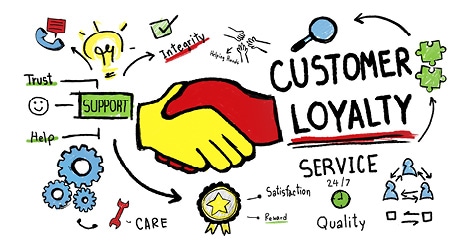Building customer relationships and developing brand loyalty is paramount to running a successful business. If you don’t create the right type of customer-focused atmosphere, your customers may support your competitors instead. According to a recent survey by RightNow, 89 percent of consumers will no longer do business with a company after a poor customer service experience.
Make it a point to foster a customer-centric environment, and it will pay off. Approximately 86 percent of consumers will pay up to 25 percent more for a better customer experience. Rivalry amongst competitors is intense, and it’s imperative you not only build your customer base but also build their loyalty in order to come out on top. Take a look at the four best ways to develop and maintain a committed customer following.
Engage with Customers
With the experience being just as important as the product or service offered, engaging the consumer is key. Communicate before a question, issue or concern comes about, so you connect with your customer.
The support you provide in a proactive manner will speak volumes of your brand and create a sense of loyalty and trust. During the initial info gathering stage and after the sale is made, reach out to customers and offer tailored guidance based on their inquiry or purchase.
For example, if you have a potential customer requesting information or browsing your site, follow up with an automated email asking how you can best serve them. Try to get a feel for what their needs are and point them in the appropriate direction. Taking the time to go a step beyond shows you care about fostering a relationship and not just making a one-time sale. When a consumer makes a purchase, follow up with communication inquiring about product performance. This type of dialogue allows for added sales opportunities in the future.
Read Your Customer Well
Don’t allow customer interactions to be a one-time affair. To be successful, the customer experience needs to be viewed on a continuum. Provide multiple and varied interactions to place the customer on a journey that allows them to develop loyalty to your brand.
Understand your customers, have a game plan and get the best people on your team. Through these actions, you can lead your business, similarly to Blumenfield in his game of poker and startups, to greater success.
In order to deliver just what your customer needs, determine exactly what their end goal is. Consider email surveys, online questionnaires and market research to pinpoint how best you can serve your clients. Assess your customers’ requirements and provide targeted solutions to set the foundation for future purchases and brand loyalty.
Once you’ve established a faithful consumer, it will be that much easier to promote and sell a new product line or service; this clientele is already keenly familiar with your brand and exceptional customer service quality.
Monitor Customer Behavior
Speaking of the customer journey, make it a point to monitor how current and potential customers are interacting with your product. Ensure that consumers are engaged with your brand by collecting data and feedback.
One way to garner collective insight is by monitoring and responding to social media involvement with your business. Social media presents a unique opportunity to both connect with people who may not be familiar with your brand, yet also engage with current customers. By putting your business out there via conversations and interactions through social media channels, you can begin to assert your credibility and authority within your industry.
Reach your audience by flexing your social listening skills and jumping into conversations that will introduce your brand to consumers. With the number of social media platforms, it may seem tough to keep up with them all. Fortunately, there are Social Media Monitoring (SMM) tools available that will aid you in managing it all.
These tools provide real-time data concisely available for review. The goal is to effectively manage your business’s social media endeavors, so you are getting the most out of your consumer interactions. Data will dictate how best to proceed and if you are reaching your intended audience successfully.
Prioritize Customer Concerns
The most important thing you can do is follow-up with your customers and provide attention to those who may not be satisfied. A recent study on social media response times found that 32 percent of people who attempted to contact a business expect a response within 30 minutes, and 42 percent expect a response within the hour. It’s important to reach out as soon as possible when an issue arises so you can salvage the customer experience by providing effective solutions and showing you value their business.
In addition to communicating with consumers via social media, self-reported feedback such as automated text messages, emails or website surveys after a purchase will also help prioritize your customers. This will this allow you to address issues or concerns immediately and enables you to determine which customers are pleased and possibly in the market for additional products.
Issues are bound to arise, and you will need to handle disgruntled customers at some point, it’s how you react that matters most. The level of support you provide your customers ultimately will determine if they continue to be loyal to your company or move on to a competitor.
There are steps that business owners should take to ensure an overall positive customer experience when concerns arise. First, remain empathetic to your customer and hear them out completely. If a resolution is unable to be reached, a supervisor should be brought into the situation to take necessary action and resolve the issue immediately. Continuous monitoring of customers with unresolved concerns and prioritization of reaching a solution will ensure client retention.
Consumers are the lifeblood of your business and ultimately determine your success. Focus on the customer experience to increase satisfaction and establish brand loyalty.








